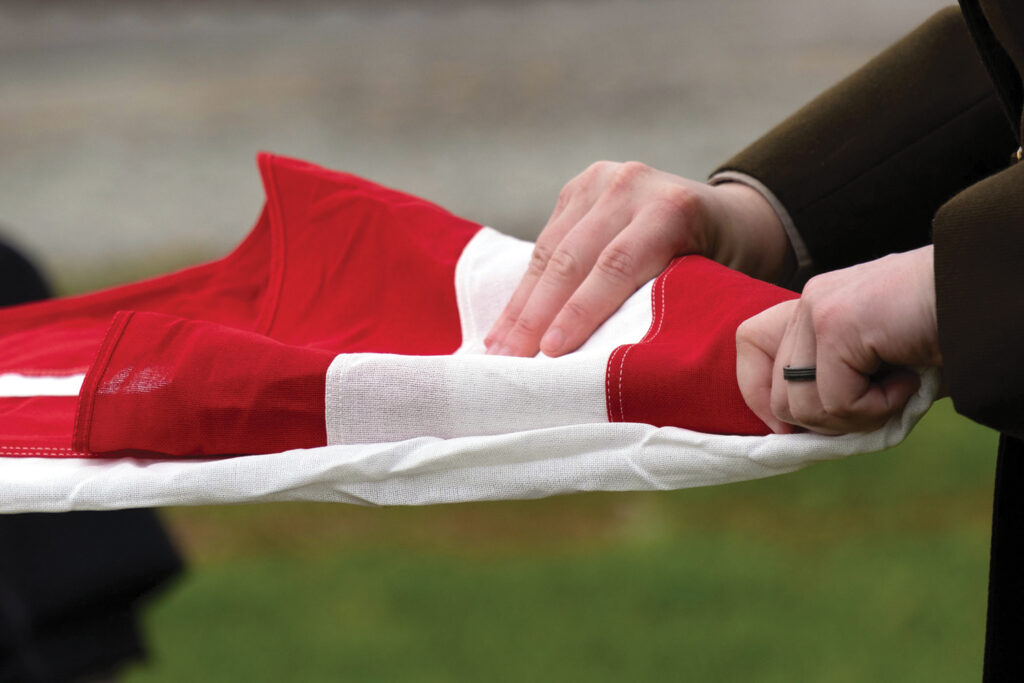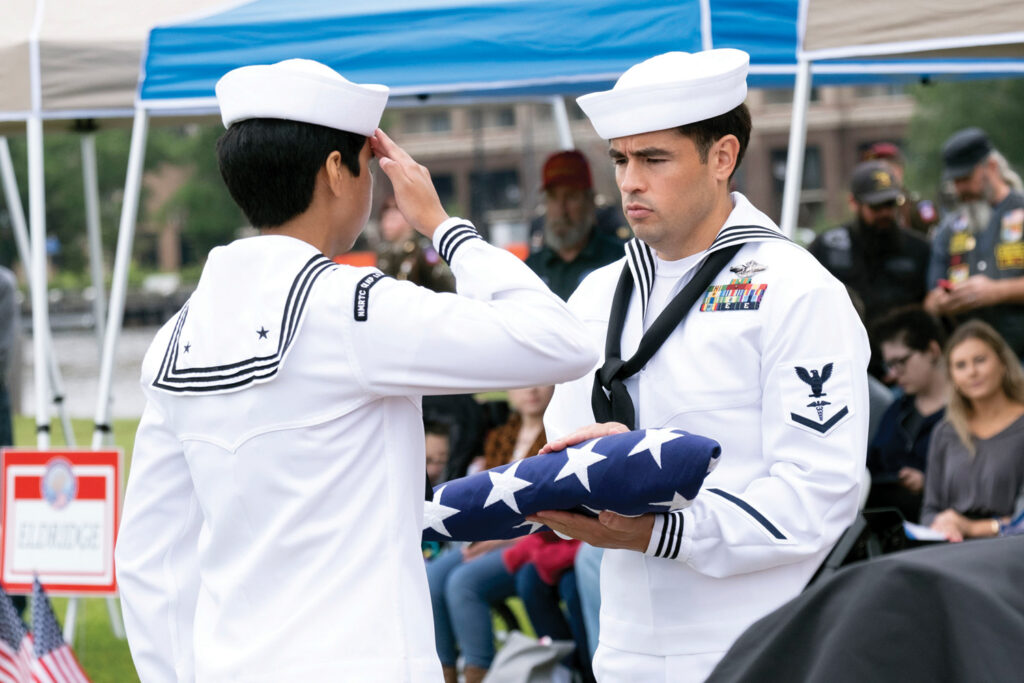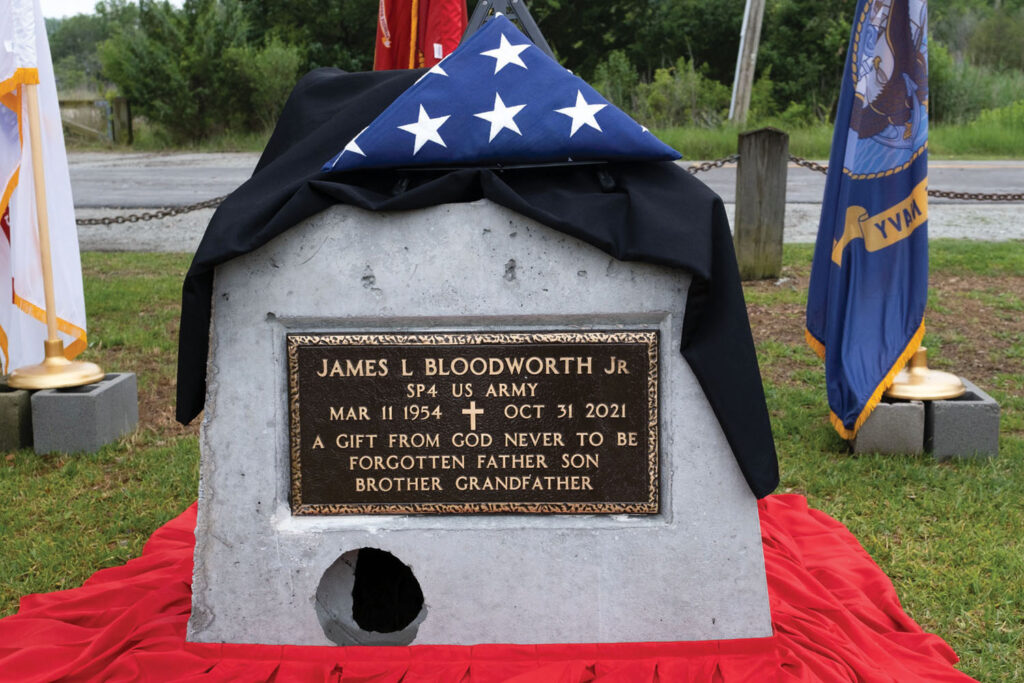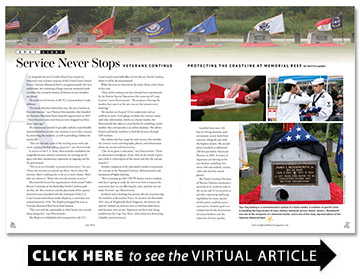Service Never Stops
Veterans continue protecting the coastline at memorial reef
BY Fritts Causby

A nonprofit based in Carolina Beach has created an innovative way to honor veterans of the United States Armed Forces. Veterans Memorial Reef is an approximately 162-acre underwater site consisting of large concrete memorial markers where the cremated remains of former service members are placed.
The artificial reef, known as AR-372, is located about 5 miles offshore.
“For locals who have fished this area, the site is known as five-mile boxcars,” says Thomas Marcinowski, who founded the Veterans Memorial Reef nonprofit organization in 2019. “This is because some train boxcars were dropped out there many years ago.”
The veterans are interred in specially crafted, ocean-friendly memorial markers so they can continue to serve their country by protecting the coastline, as well as providing a habitat for marine life.
“The urns become a part of the existing ocean reefs and create a habitat for fish and sea creatures,” says Marcinowski.
A veteran of the U.S. Army, Marcinowski established the nonprofit because national cemeteries are running out of space and their maintenance represents an ongoing cost for the government.
“This is an eco-friendly, economical alternative,” he says. “Once the veterans are placed out there, they’re there for eternity, there’s nothing else to do or to worry about. That’s why our motto is, ‘Those who served continue to serve.’”
Marcinowski hosted the organization’s third annual Fallen Heroes Ceremony at the Battleship North Carolina park on May 20. The ceremony and the placement of five aquatic memorial urns coincided with the retirement of the U.S. Coast Guard inland buoy tender Bayberry, a vessel that was commissioned in 1954. The Bayberry dropped the urns at Veterans Memorial Reef on its final mission.
“The crew and the commander in chief [were] very excited about doing this,” says Marcinowski.
The Bayberry is scheduled to be transported to the U.S. Coast Guard sector field office at Fort Macon, North Carolina, where it will be decommissioned.
When the urns are lowered in the water, divers orient them to face east.
“Nine of the existing urns have already been repositioned by the Marine Special Operations dive team out of Camp Lejeune,” notes Marcinowski. “The purpose of having the markers face east is so the sun rises on the veterans every morning.”
The markers are located 52 feet underwater and are unlikely to move. Each plaque includes the veteran’s name and other information, similar to a burial marker, but Marcinowski has taken it a step further by including a serial number that corresponds to an online database. This allows friends and family members to find the location through GPS markers.
The website also has a page for each veteran that includes the veteran’s name and biography, photos, and information about any awards and distinctions.



“One of my goals is education,” says Marcinowski. “From an educational standpoint, if you click on the award, it gives you a link to a description of the award and why the veteran earned it.”
Another component of the educational mission is to promote the concept to the National Cemetery Administration and institutions of higher learning.
“We’re teaming up with UNCW marine science students and they’re going to study the reef to see how it impacts the ecosystem, how we are affecting the coast, and how we can make it better,” says Marcinowski.
Artificial reef technology has proven effective in protecting the coastline at Brunswick Town. As noted in the November 2021 issue of Wrightsville Beach Magazine, the historic site and its Colonial-era wharves were at risk from tidal forces and dynamic wave action. Important artifacts were being washed into the Cape Fear River, and erosion was destroying valuable coastal resources.
Installed there were 220 feet of a living shoreline wave attenuation system built from concrete, along the area with the highest erosion. The second phase installed an additional 240 feet just before Hurricane Florence in 2018. A variety of organisms are thriving in the new habitat, including river otters, fish and seabirds, oysters, crabs and shoreline marsh grasses.
The North Carolina Division of Marine Fisheries maintains a network of 42 artificial reefs in the ocean and 22 in estuaries to provide a spawning and foraging habitat for many species of fish and to establish oyster sanctuaries. Another goal is to compensate for the destruction of coastal habitats and the reduction of water quality.
